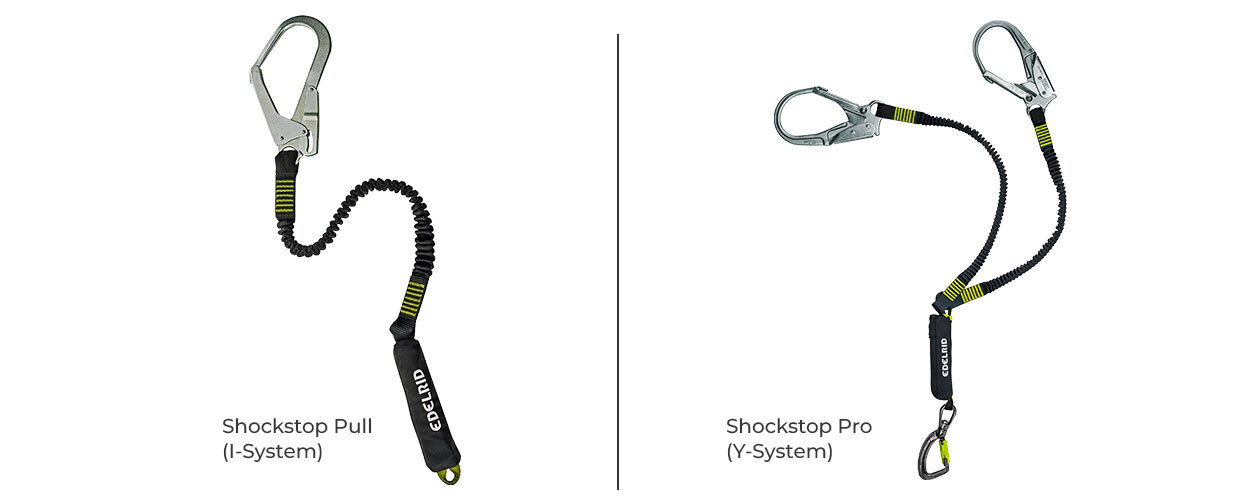Lanyards with an integrated energy absorber in accordance with EN 354 and EN 355 are the ideal instrument for many fall protection applications. The systems are typically designed as I-systems or Y-systems, meaning the energy absorber has either one arm (I) or two (Y).

Irrespective of the system type, the energy absorber is always attached to a fall arrest eyelet (labeled ‘A’) on the harness side near the body and the arm has a connecting element (e.g. a carabiner) for attachment to the anchor point or stop system. In the event of a fall, the user falls until the system pulls taut and the energy absorber arrests the fall, whereby the braking distance depends on the amount of energy generated (weight x free fall height).
I-systems are designed for uses where only short distances have to be bridged, a stationary working position has to be secured, or the fall arrest system can be clipped or unclipped and re-clipped in places where there is no risk of a fall.
Y-systems are used when each arm is unclipped and re-clipped in succession so continual safety has to be ensured.
Once the working position has been reached or if only one arm is required, a Y-system can also be used like an I-system, i.e. with just one arm. In such situations, the question arises of what you should do with the second arm.
Attaching the second arm to load-bearing elements on the harness can cause problems. Examples of load-bearing elements include most webbing straps, metal fittings, and fall arrest or retaining eyelets. However, gear loops can also be extremely strong. If the lanyard’s second arm is ‘parked’ on a load-bearing harness element and a fall occurs, the energy absorber is activated from the loaded arm and starts to arrest the fall. In this set-up however, the energy absorber can only arrest the fall until the arm attached to the harness pulls taut. The second arm then bridges the energy absorber, ‘short circuiting’ it. The dynamic fall arrest system, which is designed to convert energy, becomes a static system that may be extremely strong but cannot absorb any further energy. The peak forces that can be exerted on the body exceed the values permitted by the relevant standards and can cause severe injuries. As a result, unused arms on Y-energy absorber systems must never be clipped onto load-bearing elements on a fall arrest harness.
Special ‘parking loops’ or ‘tear-away eyelets’ on fall arrest harnesses can be used in such situations.

These points are designed to detach from the harness even under low forces and to release the second arm so the energy absorber can open unhindered. Ideally, carabiners that form part of energy absorber systems should be attached to these points on the harness at home and only moved from there to the anchor point and back.
If a harness does not have any such loops, harness elements that are definitely not load bearing (plastic parts, rubber loops, VCR straps, etc.) are a poor but potential alternative.
A simple option that is always safe is to clip both carabiners to anchor points or even to the same anchor point on a structure.


